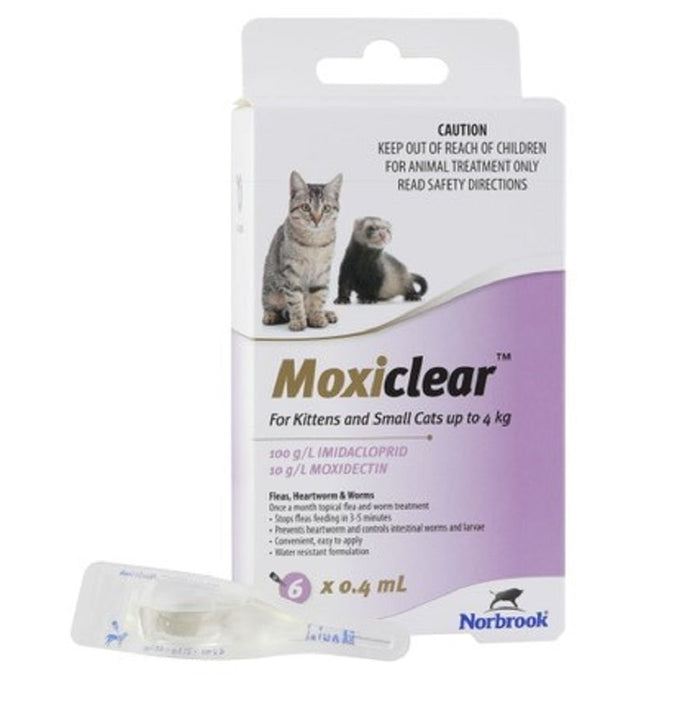Cat Flea & Tick
Moxiclear Purple for Kittens and Small Cats
- Regular
- from $32.95
- Sale
- from $32.95
- Regular
-
RRP
Sold Out
- Unit Price
- per
Showing items 1-1 of 1.
Flea, tick and worming treatment for cats
Prevention is much better than the cure when it comes to worms, fleas and ticks on your cat. At Pet Supplies Empire, we stock only the most respected and proven brands to ensure your cat has the best flea and tick protection possible.
Why are fleas a problem? (supplied by Vetchat)
While fleas are a problem throughout the year, the warmer and humid weather allows flea populations around Australia to explode. They are annoying to cats, and the bite of the flea can cause a allergic reaction causing them to be very itchy and get painful sores on their skin.
Fleas hatch from eggs and jump onto the nearest host for a feed. Although fleas can’t fly, they can jump long distances and get to your pet from another animal, the soil or grass. They are prolific breeders and one female adult flea can lay around 50 eggs per day – this means a couple of fleas feeding on your kitty can turn into scores of them very quickly!
These eggs fall off your pet wherever they frequent (think carpet, rugs, floorboards, backyard etc), where they hatch into larvae and ultimately develop into adult fleas and start looking for a host again, such as you or your pet.
Prevention is definitely better than the cure when it comes to fleas. Don’t wait until summer hits before you start thinking about flea treatment – by then it can be too late!
How do I know if my cat already has fleas?
The vets at Vetchat have put together the top three ways to tell if your cat has fleas:
- You see fleas: Fleas are a dark brown colour, a few mm in size and can be spotted by the naked eye just by inspecting your cat’s skin after parting back the fur. Typically, you find them on the skin around your cat's rump but they can be anywhere.
- Flea dirt: This is flea poop (your pets dried blood). It looks like there’s dirt on your cat’s skin. If you stand your cat on some white paper towel and use a flea comb to put some of this dirt on the towel, add some water to the suspected flea dirt - and if the water makes the dirt a reddish colour on the paper you have your answer - this is flea dirt and even if you can’t see a flea - you have a flea problem.
- Skin irritation: A cat with fleas will usually show visible signs of irritation and restlessness. If your cat is shaking its head, scratching, licking, or chewing on certain parts of its body more than usual, this may be a sign of fleas.

